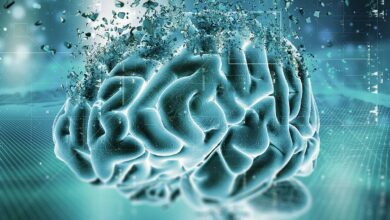CBD oil is an extract of the cannabis plant, made from natural ingredients, which is not usually available in pharmacies. Studies show its effectiveness and increased quality of life in chronic pain problems and in cases of neuropathic pain.
Any of the structures of the spine can be affected by problems that cause discomfort, such as illness or injury. The bones of the cervical vertebrae as well as the intervertebral discs and the soft tissues, muscles and ligaments in the area can produce chronic or acute pain. Cervicalgia, or neck pain, is one of the most common ailments worldwide, causing huge suffering when intense and occuring over a prolonged period of time.
Cases can be caused by muscle (contractures) or nerve (neuropathic pain). CBD is particularly effective because it strengthens the muscular and nervous systems.
For some people it causes pain in the vicinity of the seven cervical vertebrae and for others also in the scapular, humeral and clavicular areas. Some people experience added discomfort such as headache, dizziness and nausea.
How is cervical pain treated without CBD?
Commonly used pharmacological treatment is aimed at combating inflammation and pain. Anti-inflammatory drugs and painkillers are used in combination or in combination with opiate derivatives and muscle relaxants.
Other drugs, called “adjuvant analgesics” because they do not have a direct analgesic action, can also help to combat chronic or acute pain: tricyclic antidepressants and anticonvulsants because they limit the transmission of pain messages along the nerve pathways and seem to stimulate the production of the body’s natural analgesics.
Let’s see how another product that is not available in pharmacies, such as cannabidiol CBD (THC-free cannabis oil), can provide all these benefits without the unwanted side effects of drugs, as it is made exclusively from plants.

How does the endocannabinoid system work?
The Endocannabinoid System, where CBD acts, is responsible for maintaining the balance of our organism, it has a very close relationship with the Central Nervous System, the Musculoskeletal System and the Circulatory System, influencing inflammatory and pain processes. CBD oil, due to its capacity to stimulate them, can be a very valuable tool to avoid discomfort and improve the quality of life, relieving chronic and acute back pain in cases of cervicalgia thanks to its different properties and effects:
- analgesic effect: activity on TRPV receptors responsible for the transmission of mild, chronic or neuropathic pain.
- anti-inflammatory effect: modulates the body’s inflammatory response, stimulating or inhibiting it as required and acting on both muscle and bone and also on the nervous system.
- regenerative effect on muscular injuries as it stimulates the regeneration of damaged tissue.
- Muscle relaxant effect due to its hypotensive, vasodilator and antispasmodic properties.
- Calming, mentally relaxing effect, due to its hypotensive properties and its involvement with the physiological systems involved in emotional and mental processes. It triggers a greater sense of well-being (anti-anxiety), which helps to relieve the stress associated with the presence of pain. It also promotes sleep, which is of great importance in muscular regenerative processes.
- Neuroprotective effect that relieves pain in cases of neuropathic origin.
CBD for pain relief
All these effects are achieved through sublingual administration in many countries where this use is permitted. In Spain we can use it topically, applying a few drops to the affected area and massaging very gently or adding these drops to another base oil or cream to massage with this mixture. Many studies have shown a high concentration of endocannabinoid receptors (CB1/CB2) in the skin and because of this it can be easily absorbed through the skin and cause interaction by suppressing the inflammation of resident and infiltrating immune cells, among the other effects mentioned above.
How much CBD oil do I use?
How much CBD oil to use depends on the type of injury, the intensity of the pain and how your body responds. We know for sure that according to various studies and tests on humans and other animal species, CBD seems to be able to relieve neck pain and inflammation even in very small amounts. It is therefore recommended to try and start with a few drops at a low concentration and increase if necessary to reduce or eliminate the pain.
Depending on the type of injury, the extent of pain, the user’s body weight and many other factors, the amount of CBD oil needed to relieve pain caused by neck pain can vary greatly. It is important to find the effective amount in each case to solve our problem.
A review paper published last year in the journal Pain shows that the potential of using CBD (or cannabidiol) for pain is enormous but not sufficiently documented in the most common pain conditions because the research we know of so far has focused on pain associated with multiple sclerosis and nerve damage. “Very few studies have been done on the most common pains, such as back or neck pain, or osteoarthritis,” says Gabrielle Campbell, from the University of New South Wales and co-author of the research.

Scientific research on cannabis
Research has been restricted by marijuana’s status as a Schedule I drug (subject to strict regulation). Scientists must have a special licence to obtain it. Much of the most reliable research on cannabis and pain involves a pharmaceutical preparation called nabiximol (Sativex by its trade name), a plant extract licensed in more than 25 countries for the relief of muscle spasms and pain related to multiple sclerosis that is so expensive that many countries have therefore not licensed its use, as pharmaceutical companies have not agreed a price with the responsible health agencies.
In the United States, however, the only cannabinoids authorised are synthetic products intended to treat nausea in cancer patients and a new drug, Epidiolex (from the producers of Sativex), for the treatment of rare forms of epilepsy. Surprisingly, there is no explicit cannabinoid product against pain despite the fact that it affects most of the world’s population and CBD is very effective against this symptom and without side effects.
Other scientific studies on CBD and pain
FAQ
Can CBD improve the quality of life in cases of chronic pain?
Yes, numerous studies published in reputable scientific journals have shown this effect in cases of chronic pain.
If you have neck pain problems, can you use CBD?
Yes, one of the most powerful effects of CBD is as an analgesic.
Can I use CBD for neck pain in combination with other treatments?
Yes, CBD on its own is very effective against pain, but you can help to solve your problem with other measures always recommended by professionals: proper diet, physiotherapy and specific physical exercise.
What kind of pain can CBD products and medical marijuana be used for?
There have been many studies investigating the use of medical cannabis (marijuana) and CBD products to relieve chronic pain including back and neck pain, muscle tension, cancer pain, fibromyalgia pain, arthritis pain and spine pain, amongst many other health conditions.
The pain relieving qualities of both high quality CBD and medical cannabis are such that many pèople see them as an alternative to the dangerous prescription drugs, namely opioid medication, which has caused a major opioid addiction crisis in countries such as the US.
Are dietary supplements derived from Cannabis Sativa legal?
The legality of cannabis sativa, and hemp derived CBD products, varies from country to country and state to state. If you are planning on using them, please check the legality of such products first.
Are CBD and medical marijuana safe?
Generally, cannabidiol (CBD) is considered fairly safe, however anything used for pain management can pose significant risks so it is always worth consulting with a medical professional before adding anything to your regime. Medical marijuana contains THC which has psychoactive effects. Whilst this is not a problem for many people, prolonged marijuana use, particularly amongst young people whose brains and bodies are still developing, has been linked to some mental health issues so care should be taken.
READ MORE
Terpenes, what are they and what do they do?







